Embed presentation
Download as PDF, PPTX
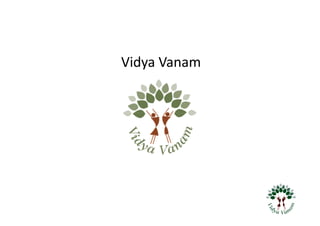



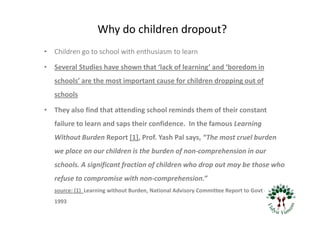










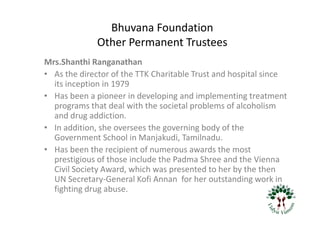







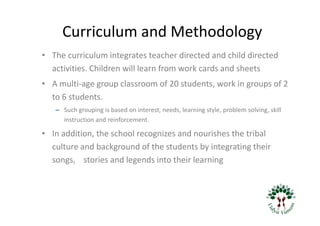


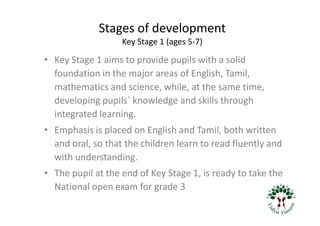










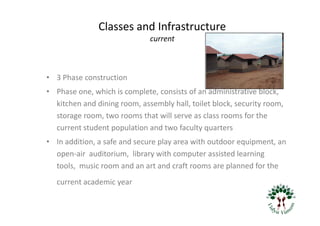


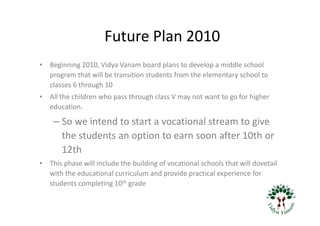





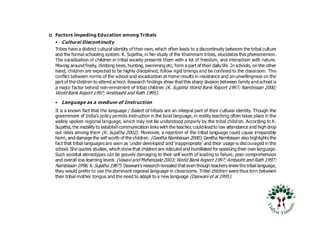



Vidya Vanam is an elementary school established in Annaikatty for underserved tribal and underprivileged children, aimed at providing holistic and affordable education through an activity-based learning methodology. Despite improvements in access to education in Tamil Nadu, dropout rates remain high due to various factors including parental ignorance and lack of learning resources, particularly for marginalized groups. The school's curriculum integrates cultural understanding and promotes independent thinking, addressing the specific educational needs of the local community.
















































